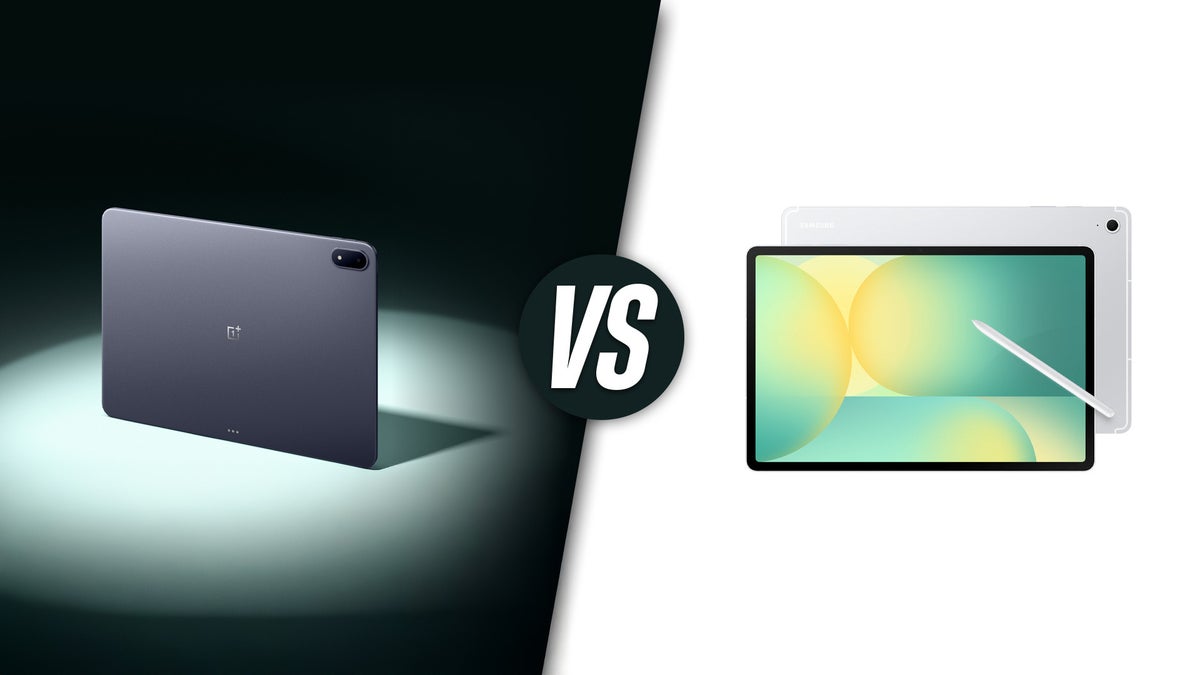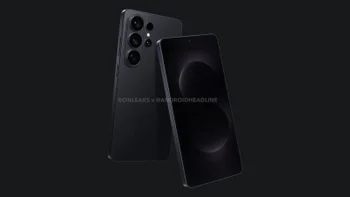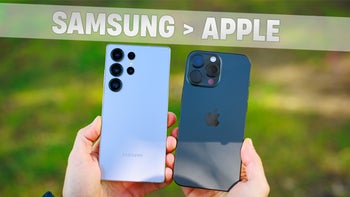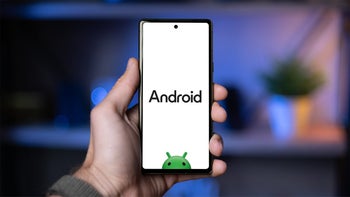OnePlus Pad 3 vs Galaxy Tab S10 FE Plus: All expected differences
We may earn a commission if you make a purchase from the links on this page.

Intro
When the OnePlus Pad 3 launches on June 5, it will directly be challenging the Galaxy Tab S10 FE Plus. The new tablet from OnePlus is expected to be priced between $599–$649, similar to the Fan Edition tablet from Samsung that starts at $599.
Will Samsung's mid-range tablet still be as desirable once the OnePlus Tab 3 comes out? Looking at these potential differences, chances are not as much.
OnePlus Pad 3 vs Galaxy Tab S10 FE Plus differences explained:
| OnePlus Pad 3 * | Galaxy Tab S10 FE Plus |
|---|---|
| 13.2" display, IPS LCD, 144Hz | 13.1" display, IPS LCD, 90Hz |
| Snapdragon 8 Elite (3 nm) | Exynos 1480 (4 nm) |
| Up to 12 GB RAM | Up to 12 GB RAM |
| 12,140mAh battery | 10,090mAh battery |
| 67W wired charging | 45W wired charging |
| 13 MP rear camera | 13 MP rear camera |
| 8 MP front camera | 13 MP front camera |
| Stylus purchased separately | Stylus in the box |
| 3–4 years of OS updates | 7 years of OS updates |
*Expected
Table of Contents:
Design and Display
The OnePlus Pad 3 has gotten bigger
Just like its predecessor, the Pad 3 is also expected to come in an aluminum body, and so does Samsung's Galaxy Tab S10 FE Plus. The FE Plus keeps the familiar Samsung tablet design—uniform bezels, magnetic S Pen support on the back, and full IP68 water and dust resistance. Its 6.5 mm profile is thin and feels sleek.
The OnePlus Pad 3 will be a larger device than its predecessor, with a 13.2-inch screen and a flat, 6 mm thick chassis. Early images show a Storm Blue finish with subtly rounded corners and thin bezels.
The Pad 3’s weight hasn’t been confirmed, but given the Pad 2 weighed 584 g heft and the upsized display, we’re likely looking at something close to 600 g. This would place the OnePlus Pad 3 somewhere between the Tab S10 FE (497 g) and Tab S10 FE Plus (664 g).
The OnePlus Pad 3 will be a larger device than its predecessor, with a 13.2-inch screen and a flat, 6 mm thick chassis. Early images show a Storm Blue finish with subtly rounded corners and thin bezels.
The Pad 3’s weight hasn’t been confirmed, but given the Pad 2 weighed 584 g heft and the upsized display, we’re likely looking at something close to 600 g. This would place the OnePlus Pad 3 somewhere between the Tab S10 FE (497 g) and Tab S10 FE Plus (664 g).
Keyboard and Stylus
The Galaxy Tab S10 FE Plus comes with an S Pen in the box, which is a passive stylus that works well for handwriting, sketching, and AI-powered tools like Handwriting Help and Solve Math in Samsung Notes.
For typing, Samsung offers two optional accessories: the Book Cover Keyboard ($200) with a trackpad, and the slimmer Book Keyboard Slim ($140), both connecting via pogo pins.
The OnePlus Pad 3, like its predecessor, will likely support the OnePlus Smart Keyboard and OnePlus Stylo 2. We praised the Pad 2’s keyboard for its large keys, trackpad gestures, and magnetic charging last year. The stylus is also very versatile thanks to its 16,000 levels of pressure sensitivity and remote controls.
Unlike Samsung, OnePlus doesn’t include accessories by default—but the Pad 3’s launch promotion may bundle both. Also, there is a possibility that OnePlus introduces new versions of these accessories.
The OnePlus Pad 3, like its predecessor, will likely support the OnePlus Smart Keyboard and OnePlus Stylo 2. We praised the Pad 2’s keyboard for its large keys, trackpad gestures, and magnetic charging last year. The stylus is also very versatile thanks to its 16,000 levels of pressure sensitivity and remote controls.
Unlike Samsung, OnePlus doesn’t include accessories by default—but the Pad 3’s launch promotion may bundle both. Also, there is a possibility that OnePlus introduces new versions of these accessories.
Performance & Benchmarks
The OnePlus Tab 3 will be leagues ahead, just like its predecessor
This is where we expect the OnePlus Pad 3 to show clear dominance, as it is said to run the Snapdragon 8 Elite—Qualcomm’s latest 3 no flagship chip. It’s expected to deliver laptop-level multitasking performance and power efficiency, especially when paired with the 12 GB RAM and rather lite OxygenOS.
Software
Samsung will likely offer the better deal as far as software support goes. You get Android 15 out of the box and 7 years of updates. OnePlus hasn’t confirmed its policy yet, but if it mirrors the Pad 2, we’re looking at 3 major OS updates and 4 years of security patches, which is still respectable.
The OnePlus Pad 3 will ship with OxygenOS, likely version 15, based on Android 15. It is a pretty stock Android experience with a few tweaks.
OnePlus teased an upgraded Open Canvas, which is OnePlus’s own take on flexible multitasking. It allows you to group apps and swipe between active windows horizontally, and we can't wait to see how the company has improved this feature.
Audio Quality
The Galaxy Tab S10 FE delivers impressive sound for its class. It has a wide sound stage, deep bass, and not that much distortion at higher volume.
The OnePlus Pad 3 is expected to retain the same six-speaker system from the Pad 2, which gets quite loud, has a rich sound profile and minimal distortion, even at high volumes.
For most users, both tablets should handle music and video playback well, but the Pad 3 may have the edge in fullness and volume output.
Battery and Charging
The Tab S10 FE Plus sports a 10,090mAh battery and a new Exynos chip built for efficiency. In our tests of the standard Tab S10 FE with a similar setup, it reached 16.5 hours of web browsing and nearly 11 hours of gaming. That’s best-in-class endurance for a tablet this size and price.
The OnePlus Pad 3 is expected to pack a 12,140mAh cell—one of the biggest in any consumer tablet—but it will also power a much larger, faster screen and a more power-hungry chip.
The OnePlus Pad 3 is expected to pack a 12,140mAh cell—one of the biggest in any consumer tablet—but it will also power a much larger, faster screen and a more power-hungry chip.
We expect the OnePlus Pad 3 to match or slightly fall behind the Galaxy in the web browsing and video streaming tests, but pull ahead in tasks like 3D gaming thanks to better thermal management.
There probably won't be any contest when it comes to the charging speeds, though. OnePlus' tablet will likely support 67W fast charging, and chances are that will be quick enough for a full top-up in just under an hour. Samsung’s 45W speed, while improved, will still be slower, with around 90 minutes for a full charge.
There probably won't be any contest when it comes to the charging speeds, though. OnePlus' tablet will likely support 67W fast charging, and chances are that will be quick enough for a full top-up in just under an hour. Samsung’s 45W speed, while improved, will still be slower, with around 90 minutes for a full charge.
Neither tablet supports wireless charging.
Camera
Basic tablet cameras
Don’t expect either tablet to impress you with its cameras. That said, both should be serviceable for video calls. Samsung includes a 13 MP rear camera and a 12 MP front shooter capable of 4K video.
The Pad 3 is expected to carry over the Pad 2’s 13 MP rear and 8 MP front-facing cameras, which delivered decent results in our review last year.
If camera quality matters at all in your tablet experience, the Galaxy Tab has the edge thanks to its higher-resolution front sensor and support for 4K video.
If camera quality matters at all in your tablet experience, the Galaxy Tab has the edge thanks to its higher-resolution front sensor and support for 4K video.
Summary
If you want a powerful tablet that feels snappy, charges fast, and is built for multitasking and entertainment, the OnePlus Pad 3 should be the better pick here. Although, it could also be hiding some other benefits that we still don't know about.
The Galaxy Tab S10 FE Plus is a rock-solid choice, especially considering its good battery life, long support, and the included stylus. It does lack performance, but it does the job for most regular tablet use cases.
Stay tuned for a more clear picture of how these two might compare when OnePlus announces the OnePlus Pad 3 on June 5.
Follow us on Google News













Things that are NOT allowed:
To help keep our community safe and free from spam, we apply temporary limits to newly created accounts: